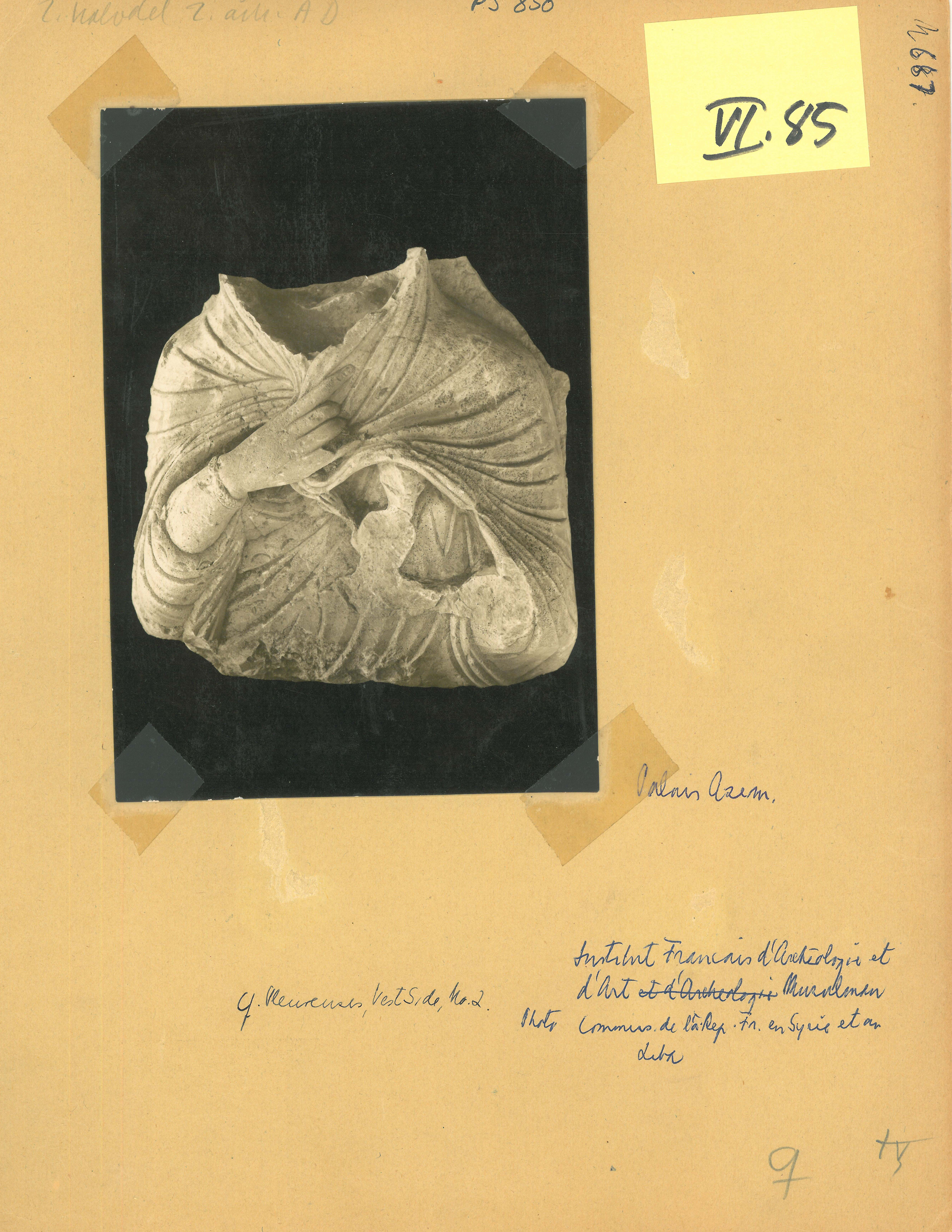Archive Archaeology Breaks Ground!
By Postdoc Amy C. Miranda.

The research project, “Archive Archaeology: Preserving And Sharing Palmyra’s Cultural Heritage through Harald Ingholt’s Digital Archives,” is now well underway with the addition of Dr. Amy C. Miranda as a postdoctoral fellow on the project. As such, the team—project director Rubina Raja, assistant professor Olympia Bobou, and Miranda—has begun working with the digitized archive sheets from the Ny Carlsberg Glyptotek (Copenhagen) and preparing the archive for publication.
The archive sheets, of which there are over 2,500, are the labors of Danish archaeologist Harald Ingholt, whose work on Palmyra occurred during the 1920s and 30s. These sheets are the fruits of his research, collecting images of Palmyrene portraits and deciphering their iconography and inscriptions. Some of the sculptures appear in the archive as photographs, others are photocopies from publications. The sheets themselves are often file folders, or a red-orange toned paper, upon which Ingholt mounted or taped the image and scribbled descriptions, bibliography, and transliterated inscriptions.
Over time, Ingholt would go over his archive, making additions and finding correlations. He began working with the Ny Carlsberg Glyptotek in 1981 and by 1983 the archive had made the museum its home. There, the heavily damaged sheets would be replaced by the dark grey paper of the Glyptotek and a new image, leaving questions as to what Ingolt’s musings and original image might have been. From boxes of paper, the archive sheets have now found new life as digital files at Aarhus University.
The Archive Archaeology project is concerned with the sheet itself as object and will focus on composing each sheet’s object biography. From Ingholt’s hands to the Ny Carlsberg Glyptotek, each sheet tells a story—not only of Palmyra, its funerary arts, and its people—but of the history of archaeology in the early 20th century, and of Ingholt himself. The resulting publication, which will be published according to the FAIR principles, will consist of the archive sheets and provide commentary on the sheet as art historical object. The project strives to publish the archive in the spirit of Ingholt, excavating through the stratigraphy of each sheet and citing each hand’s contribution to these multifaceted objects.
At present, the team has begun the process of evaluating each of the 2,500 sheets. Ingholt’s numbering system differs from that of the Glyptotek. Sculptures that whose locations were unknown to Ingholt have been located by the work of UrbNet’s Palmyra portrait project. Remarks in pencil have been crossed out, while traces of pen layer over top and the occasional post-it note appears with further (and later) notations. All of this information is being organized and synthesized, peeling back the layers to learn not only what can be learned about the sculptures, but about Inhgolt.
Another goal of the project and its “excavation” is to develop a framework for archival best practices. The project seeks to make clear to researchers the stratification of research performed on the objects and documented on the archive sheets. Through their experiences, the team is planning future work that documents best archival practices though a series of workshops in fall 2021. Thus, in breaking ground on the Archive Archaeology project, the team aims to provide the academic community with invaluable resources on Palmyra, the history of archaeology, and archival practices.
More about the project is available at https://projects.au.dk/archivearcheology/
Further Reading:
- Raja, R. and A. H. Sørensen 2015. Harald Ingholt & Palmyra (English version) (Aarhus: Fællestrykkeriet Aarhus Universitet).
- Raja, R. 2015. "From studying portraits to documenting Syria's cultural heritage", in R. Raja and A. H. Sørensen (eds.), Harald Ingholt & Palmyra (Aarhus: Aarhus University), pp. 10–13.
- Raja, R. 2016a. “The history and current situation of World Heritage sites in Syria: The case of Palmyra”, in K. Almqvist and L. Belfrage (eds.), Cultural Heritage at Risk: The Role of Museums in War and Conflict (Stockholm: Axel and Margaret Ax:son Johnson Foundation), pp. 27–47.
- Raja, R. 2016b. “Illegal trade and export of cultural goods: The case of the Palmyrene funerary portraiture”, in D. Chahin and I. Lindblom (eds.), Fighting the Illegal Looting of Syria's Cultural Heritage (Sofia: Norwegian Institute for Cultural Heritage Research), pp. 11–12.
- Raja, R. 2018. ‘Palmyrene Funerary Portraits: Collection Histories and Current Research’ in J. Aruz (ed.), Palmyra. Mirage in the Desert (New York: The Metropolitan Museum of Art), pp. 100–09.
- Raja, R. 2019. ’Harald Ingholt – og Palmyra, oasen i den syriske ørken’, in E. Mortensen and R. Raja (eds.), Store danske arkæologer På jagt efter fortidens byer (Aarhus: Aarhus University Press), pp. 105–32
- Raja R. 2019. Catalogue: The Palmyra Collection, Ny Carlsberg Glyptotek (Copenhagen: Ny Carlsberg Glyptotek).
- A. M. Nielsen and R. Raja (eds.) 2019. The Road to Palmyra (Copenhagen: Ny Carlsberg Glyptotek).
